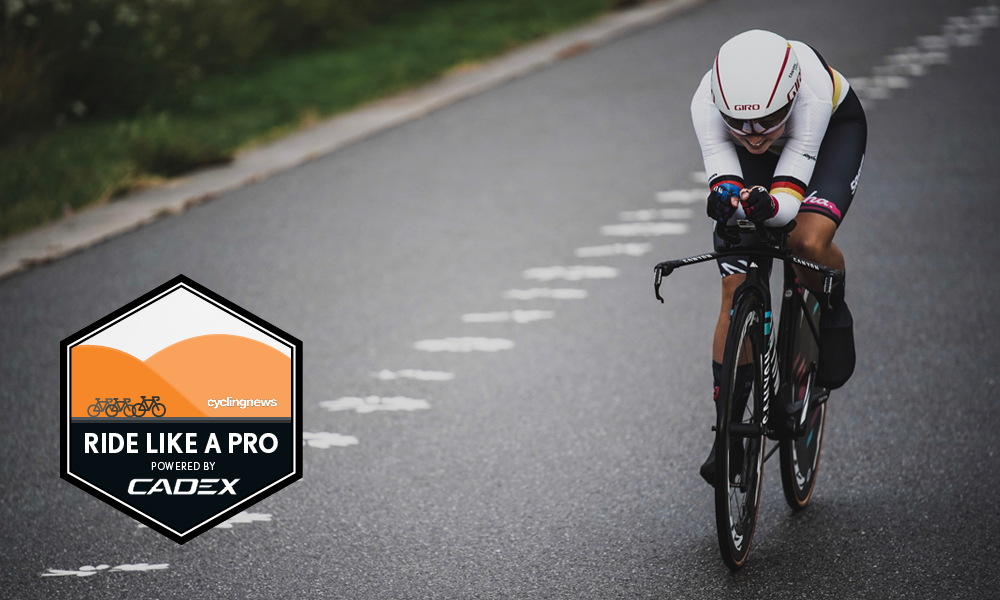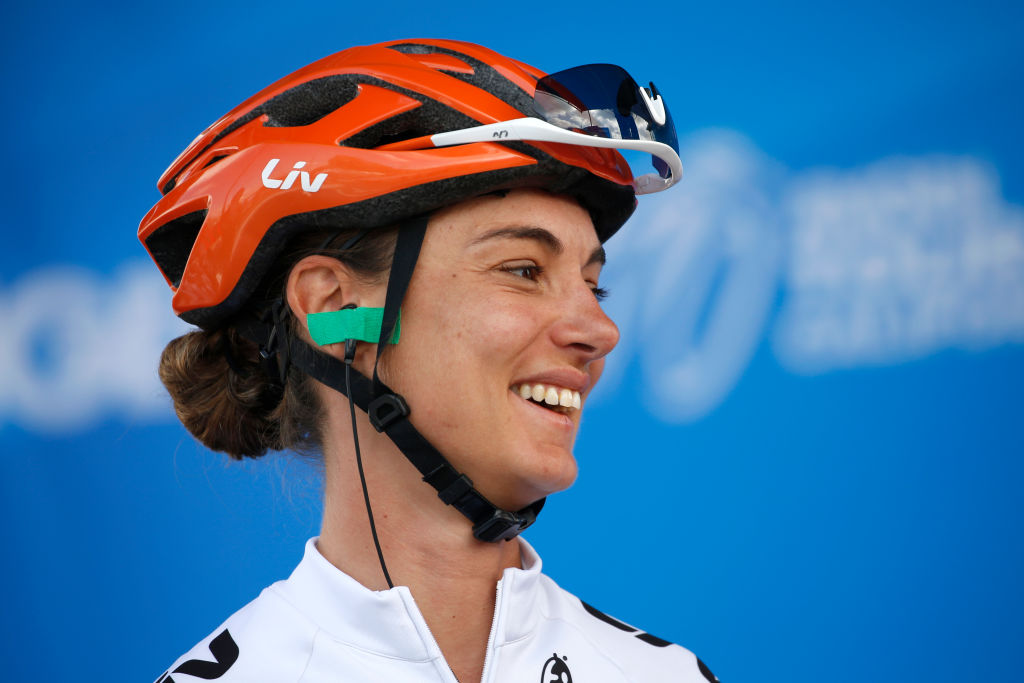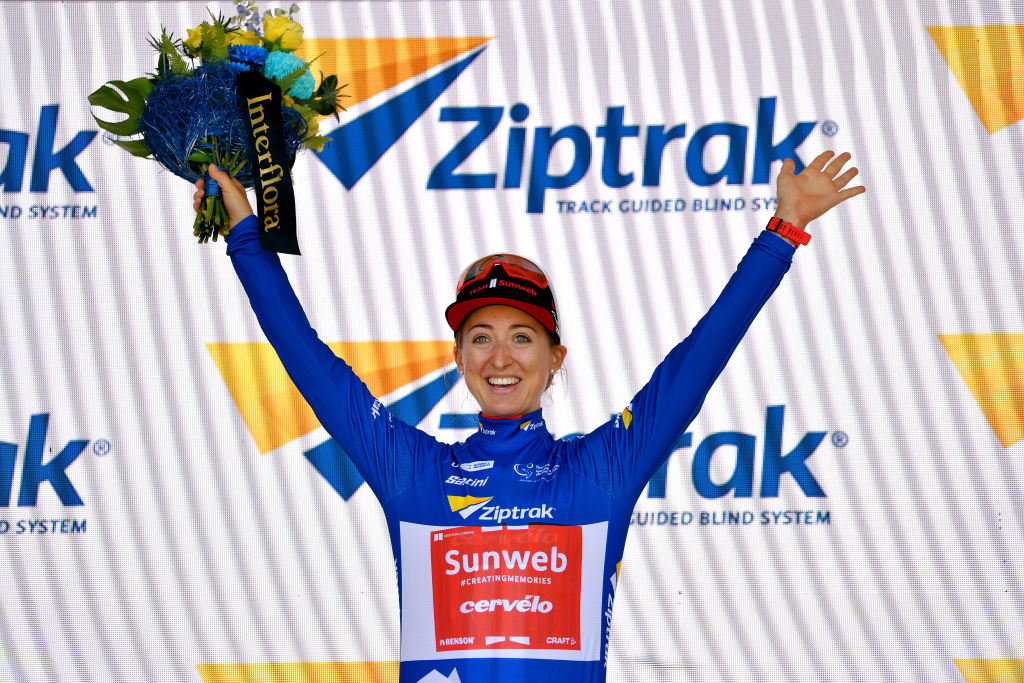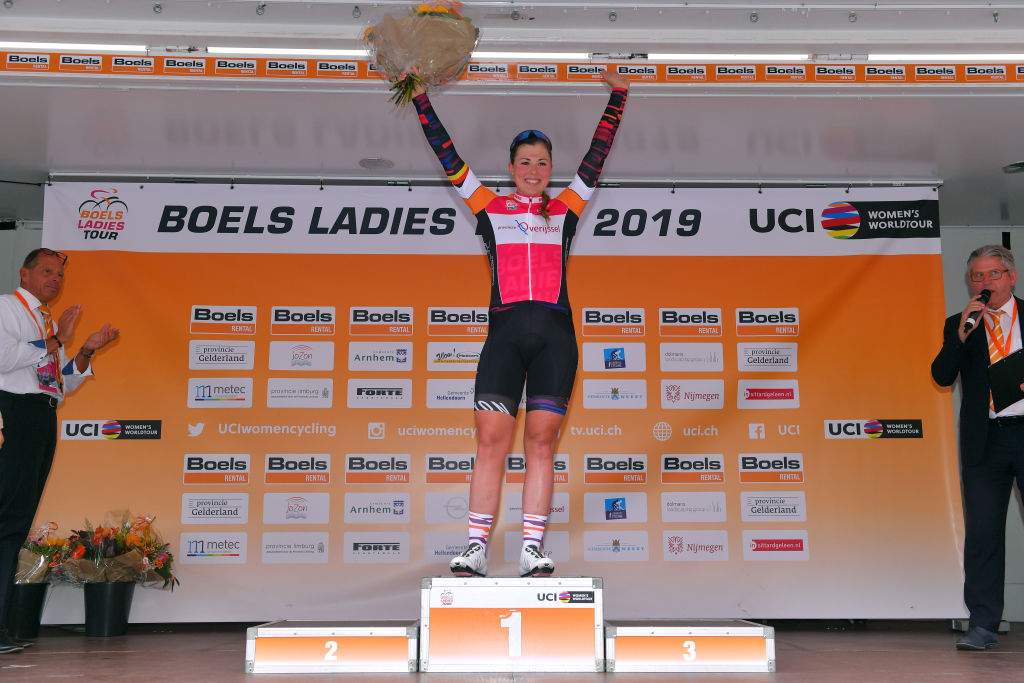Cycling racing tips: Training, nutrition and equipment advice from the Women's WorldTour
Cycling racing tips from Ashleigh Moolman-Pasio, Leah Kirchmann and Lisa Klein

The introduction of the Women's WorldTour, along with its more recent reforms, has led to a massive jump in the level of professionalism of the sport and a surge of competitiveness in women's professional cycling over the last five years.
The COVID-19 coronavirus may have halted the racing season for five months, but it's now back up and running and many riders haven't skipped a beat when it comes to their training, nutrition and equipment preparations, so if you're looking for cycling training tips, there's no better place to look for advice than the very top of the cycling hierarchy.
Below, we hear from Ashleigh Moolman-Pasio (CCC-Liv) on race-day preparation and training, Leah Kirchmann (Sunweb) on race-day cycling nutrition, and from Lisa Klein (Canyon-SRAM) discusses equipment preparation, sharing top tips from within the pro peloton that you can take into your own training and racing.

Race day training - Ashleigh Moolman-Pasio (CCC-Liv)
1. Train your weakest points, too
We are all tempted only do the interval sessions that we enjoy, and those are the ones we are usually good at. It's important to train your weaknesses, too, so that you can race your strengths. You have to do the interval sessions that you might not enjoy because they are obviously the ones that you often get the most value out of. For example, for me, it's really easy for me to go a do hill climb intervals because it's something that I'm good at and I see good results. However, I have often ignored sprints during training, but it's important to train sprints, even for me, because even as a climber or a GC-type of rider, there are going to be occasions when I need to be able to sprint against a smaller breakaway or a group, and so it's important not to neglect that part of my training.
2. Understand your workouts
It's important to understand what you are doing in training. There's a session that I really hated doing, for many years, and so I would avoid it at all costs or find excuses not to do it. The main problem was that I didn't understand the session or it hadn't been described to me correctly by my coach. Having changed coaches and having it properly prescribed, the session now makes more sense. Now, I do that session more often.
Get The Leadout Newsletter
The latest race content, interviews, features, reviews and expert buying guides, direct to your inbox!
An example is under-over-training or Tabata-style training that is 20 seconds high-intensity followed by 40 seconds of lower intensity, and so on. I hated doing those mainly because my coach prescribed it as an all-out sprint and then recovery. To me, all-out sprint meant all-out sprint, but it's impossible to do all-out sprints over and over again. My new coach explained it better and gave set targets for the sprints, which made more sense and it was more achievable, and now I've changed my opinion on the session.
It's important for athletes to understand why they are doing certain interval sessions, especially if you don't enjoy them because it might give you more motivation. You shouldn't feel shy to ask if you don't understand why you are being prescribed a certain interval session. It's important to have that open communication with your coach.
3. Train your race-day nutrition
You have to train your nutrition. It's an area where I've made many mistakes during my career. I would get on with my physical training but didn't put enough focus on training my nutrition. Oftentimes, I probably didn't eat enough during my training rides and then I would try to eat a lot in the race, because I knew what I should be consuming per hour, but my body didn't respond to well because I never trained it.
It sounds illogical but I think a lot of people underestimate how important it is to train your nutrition. If you are going to do an interval session, you should treat those sessions as race-day nutrition training, too. Try and get in the same amount of carbohydrates per hour as what you would be consuming during a race.
4. Race-specific training is key to success
Training specifically for events is important. Training for the Spring Classics is different compared to training for the Giro Rosa, for example. The off-season is always geared toward volume and building your base, and then the closer you get to the start of race season, you would be doing shorter intensities within your sessions to simulate racing.
For the Spring Classic, you would be doing punchy-type training because the races have short, sharp and steep climbing. Leading up to Flèche Wallonne, I have a really nice climb close to my home, a perfect warm-up to the climb, and then it's a really steep climb similar to the Mur de Huy. I use that for my repeat intervals.
Normally we would be racing the Giro Rosa in July, in which case, training would change to become more focussed on longer climbs, alpine passes and sustained efforts. Find climbs that are similar, if you can, because it's great for your confidence to feel like you've practised that specific and important part of the race.
Five or ten years ago, women's cycling wasn't as specified as men's cycling, and so, someone like Marianne Vos could win the Giro Rosa while only training in the Netherlands. Nowadays, the standard has gone up drastically, and so, to be able to be competitive in the Giro Rosa (GC), you have to have spent time in the mountains. If you don't live in an area where there are high mountains, you need to travel to a place where you can do training camps in the high mountains.
5. There's value in training indoors (after COVID-19)
This year has been a different one because of lockdown and I was exposed to training on all the virtual platforms which has opened my eyes to new opportunities. I went from being someone who avoided training indoors at all costs to having a new appreciation for it. I see a lot of value in including one indoor session a week now, and specifically an interval session.
Zwift is my favourite platform, if I'm 100 per cent honest, and what I realised is that out on the road there are cheat mechanisms that we adopt without realising it. We find the most efficient way, most of the time, in getting the best out of our strengths. However, when you are on an indoor trainer there isn't really a way to cheat. You don't have the free-wheel and using high cadence isn't necessarily as efficient on an indoor platform.
It's definitely a valuable tool to work on your weaknesses, especially in my case because I'm a climber, generally a high-cadence type of rider, and I use the bike a lot by getting out of the saddle and throwing the bike. On an indoor platform, you are forced to just push power, and so, I've seen a lot of value in doing certain interval sets on the trainer because it forces you to push, there's no other way of producing the power.

Race Day Nutrition - Leah Kirchmann (Sunweb)
1. Don't try new foods on race day
It is always best to try different foods and fuelling strategies out in training first to avoid any unintentional gastric distress on race day. I always stick to foods that I know will digest well and provide me with enough energy for the race before and during a race. For example, I start the day with a good breakfast of coffee and big bowl of oatmeal with a banana, peanut butter, yoghurt and maple syrup, a meal I know will digest well and provide adequate energy for racing.
2. Fuel with carbs
Pro cyclists know that carbs are the primary fuel source you need on race day if you want to contend for the win. I aim to consume 60-90g carbohydrates/hour from a mix of NamedSport bars, gels and drink mix during a race. There is evidence that consuming an even higher rate of carbohydrates/hour is possible, but you really need to train your gut beforehand to avoid digestive issues in the race.
3. Start with a nutrition plan
I always make a nutrition plan before an event and estimate the amount I should plan to eat and drink to match the demands of the race. I also consider feed zone locations, ideal roads for feeding from the car, and specific parts of the course where I plan to be especially focused on fuelling. Starting with a plan also works as a reminder to keep fuelling even as the racing speed and intensity pick up.
4. Learn from the past
After a race, I always input my race day nutrition intake into a spreadsheet from our team that calculates total food and fluid intake compared to the demands of the race, considering metrics like temperature, duration and total work. I can then reflect directly on my energy levels and if I experienced any digestive issues in the race. With this knowledge, I learn which specific foods and fuelling strategies might work best for future races.
5. Consult an expert
I have been fortunate to work with many skilled dietitians over the years and have nutrition knowledge that has helped me to dial in my nutrition. The reality is that we are all very different when it comes to nutrition, so what works for one person might not work for another, therefore it can be really helpful to consult an expert!

Race Day Equipment - Lisa Klein (Canyon-SRAM)
1. Stick to the same set-up and measurements for your training bike and racing bike
I have three Canyon bikes at home but two main bikes that I am using all the time. That’s my road training bike and my time trial training bike. I am using my mountain bike, too, just during the winter or for an easy and fun ride during the season. I'm often on my time trial bike and I train for around four hours a week with some occasional coffee stops. On the road bike, I train for around 20 hours a week. I make sure my measurements on each of my training bikes are the exact same as my race bikes. I know that when I switch from my training bike to my racing bike, my body doesn't need to adjust to a new position, everything feels the same. This is essential for me.
Before you nail down the right position, I recommend trying various set-ups and then trust your own feeling. The more I trust my bike, the faster I go. I always test my set-up and give feedback to our team mechanics, which in turn is helpful feedback for them. I find a good position, which is a compromise in between being aero and feeling comfortable. That means a position that I know I can hold for a very long time and at the same time push my best possible power output.
2. Train and race with a power meter
I think cycling has developed quite a lot and a power meter, like Quarq, is always helpful to control and analyse your training and racing, not only to gain more knowledge about you as a rider, but also about the race and the bikes you are riding. Personally, in rides where I have specific intervals to do, I need my power meter. Usually, I’m not checking the numbers during intervals that much. I check in the beginning, during the first minute, and then I continue with my intervals based on feeling, and then I check to see how well I paced myself after the workout. Training is a balance between using the power meter as a guide and relying on your own feelings.
3. Choose great wheels and tyres
One of the most important pieces of equipment, for me, are the wheels and tyres. Our Zipp wheels are so fast anyway and then we have the opportunity to adapt the set-up to perfectly suit the conditions. We can factor in the rain, or different surfaces like cobbles and gravel, or flat or climbing courses. For me, it’s super important in my bike set-up. That goes hand in hand with the tyre pressure and choosing what is best for each individual rider.
I make my wheel and tyre choices with input from my mechanic. If there’s the opportunity to do a course recon, I’ll always take it. If possible, I’ll preview a course several times at a big event, in order to test different setups. For example, at the Tour of Flanders, I’ll decide with our mechanic which is the best wheel model, the best tyres, and often the lowest possible tyre pressure I can run. There, I would concentrate more on the tyre pressure because of the cobblestone sectors, as compared to the weather conditions (such as if it was wet or dry).
Wheel and tyre choice also depends on how much climbing the race includes, but I normally always go with the fastest wheel. I'm not a climbing specialist, so my job is different than the climbers, and for me to do my job as good as possible, I’ll choose the aero and fast wheels. When the race has more of a rough surface, for example the roads in the UK versus the roads in Germany, then I’ll run less tyre pressure and a different wheel-set to the try to get the least rolling resistance.
- Best road bike wheels: Our pick of the best wheelset upgrades
4. Definitely disc brakes
A big extra gain happened for me when I changed from rim brakes to disc brakes. Especially during my favourite races, the Spring Classics, it is such a huge advantage. In rainy conditions, the disc brakes react as fast as in dry conditions and my braking behaviour also changed. I brake later, more aggressively, and with a lot more confidence, because of disc brakes.
5. Consider the contact points
Of course, you have to consider things like the saddle, shoes, the type of handlebar; all of the touchpoints to the bike are important. I never leave home without my Giro helmet! I would feel so empty and unsafe. As well, I usually try and match my Oakleys to either my mood, my kit, or the terrain. If I know there’s a lot of fast descending, then I’ll make sure I have the best protection for my eyes in case there are small stones flying up.

Kirsten Frattini is the Deputy Editor of Cyclingnews, overseeing the global racing content plan.
Kirsten has a background in Kinesiology and Health Science. She has been involved in cycling from the community and grassroots level to professional cycling's biggest races, reporting on the WorldTour, Spring Classics, Tours de France, World Championships and Olympic Games.
She began her sports journalism career with Cyclingnews as a North American Correspondent in 2006. In 2018, Kirsten became Women's Editor – overseeing the content strategy, race coverage and growth of women's professional cycling – before becoming Deputy Editor in 2023.